















Suzuki Marine USA has joined forces with the National Marine Manufacturers Association (NMMA), local dignitaries and representatives of St. Andrews Marina in Panama City, Fla. to expand access to sustainable marine fuel for recreational boaters in the Florida panhandle.
During an event at St. Andrews Marina, it was announced that Hyperfuel Purfuels™, a new sustainable marine fuel, is now available at the marina fuel docks for recreational boaters with gasoline powered boats. This ethanol-free, highperformance 93-octane gasoline has the potential to reduce carbon emissions by 30 percent more than E10 gasoline at the same renewable content. Especially important, it achieves these advantages without compromising range or performance.
Suzuki Marine’s extensive use of sustainable fuel blends at its Panama City-based U.S. Technical Center and by Suzuki Motor Corporation in Japan has proven that blended sustainable fuels deliver the performance, fuel efficiency, reduced emissions and long-term engine reliability boaters demand. Suzuki Marine’s Technical Center will also use the fuel in day-to-day operations to its commitment to the NMMA Propelling Our Future initiative.
Suzuki has long been a proponent of sustainable marine fuels to reduce recreational boating emissions. Sustainable marine fuels, made from various feedstocks such as waste cooking oils, animal fats, plant-based materials
and other green refining methods can be used in America’s 12 million registered power boats without changes or modifications to the fuel system or engine. It is literally a “drop-in” solution that will work in all types of gasoline-powered boats, and the cumulative environmental impact - both immediate and long-term — is impressive.
“Sustainable fuels have incredible potential to reduce emissions and lower the environmental impact of recreational boating across the nation,” said Brandon Cerka, Suzuki Marine General Manager Sales & Marketing. “The key lies in making these fuels more accessible to the boating public at local marinas and fuel docks. For many months, we’ve been working with local fuel distributors SC Rowe, Hyperfuels, and St. Andrews Marina to make this possible. This is great day for boaters in the Florida panhandle. We’re hopeful this will help create a groundswell of interest across Florida and eventually nationwide.”

With its U.S. Technical Center established in the region, Panama City was an ideal location for Suzuki Marine to start this groundswell. Suzuki Marine worked with its partners to develop a plan to bring sustainable marine fuel to Florida boaters. The push would expand to city-owned marinas, then private marinas in northwest Florida and eventually to the entire state.

This effort exemplifies the best principles of “Kizuna” — a Japanese term for good relationships, friendship and close ties. Suzuki’s Technical Center worked diligently to lay the fundamental groundwork, creating a win-win-win situation that is good for the environment, good for the industry and good for boaters. It will be easy for marinas to provide this new fuel to their customers. It will blend with existing fuels, so there is no need to drain the tank dry before filling. In addition, no special fuel dispensers or pumps are required.
To learn more about Suzuki Marine and NMMA Propelling Our Future initiative, contact Suzuki Marine’s Tampa, Florida headquarters at (813) 687-7200 or visit www.suzukimarine.com.
Fishing out of Murrells Inlet on May 23, angler James Carroll battled in a 129-pound amberjack that is a new South Carolina state record. Here is the story in Carroll’s own words:
We set out from Murrells Inlet, S.C. at the crack of dawn, heading offshore to the Winyah Scarp area, about 60 miles out. Our goal was to catch some mahi or wahoo. After a few hours of trolling along a weed line and the ledge without success, we decided to move closer in and try bottom fishing.
We relocated to a spot about 50 miles offshore in 100 feet of water. I switched to a Connley Fishing kingfish rod paired with a Penn Fathom 40, rigged with 80-lb. Momoi Diamond Braid and a two-hook bottom setup.
At this location, we caught vermilion snapper, black sea bass, grunts and porgies, sometimes two at a time. It was a productive day. I began waiting after getting a bite, hoping to hook a second fish. While doing this, something big hit the line without getting hooked.
Finally, I hooked a monster fish. After about 45 minutes of fighting, I told my great friend and captain of the Liberty Call, Gordon Jobe, to put the boat in gear to help bring the fish up in the water column. Around the one-hour mark, we landed what turned out to be a South Carolina state record greater amberjack.
Using a Garmin InReach, we contacted friends onshore to check the state record weight for South Carolina. They replied with 123 lbs. We knew we had surpassed that mark but had to wait a few hours to confirm.
Back at the dock, we went to Seven Seas Seafood Market in Murrells Inlet, S.C., to weigh the fish on their certified scales. The fish weighed in at 129 lbs. and measured 69 inches in length. After certification by Kris Reynolds, of the South Carolina Department of Natural Resources, the crew at Seven Seas processed the fish for me.
For more giant fish, go to coastalanglermag.com

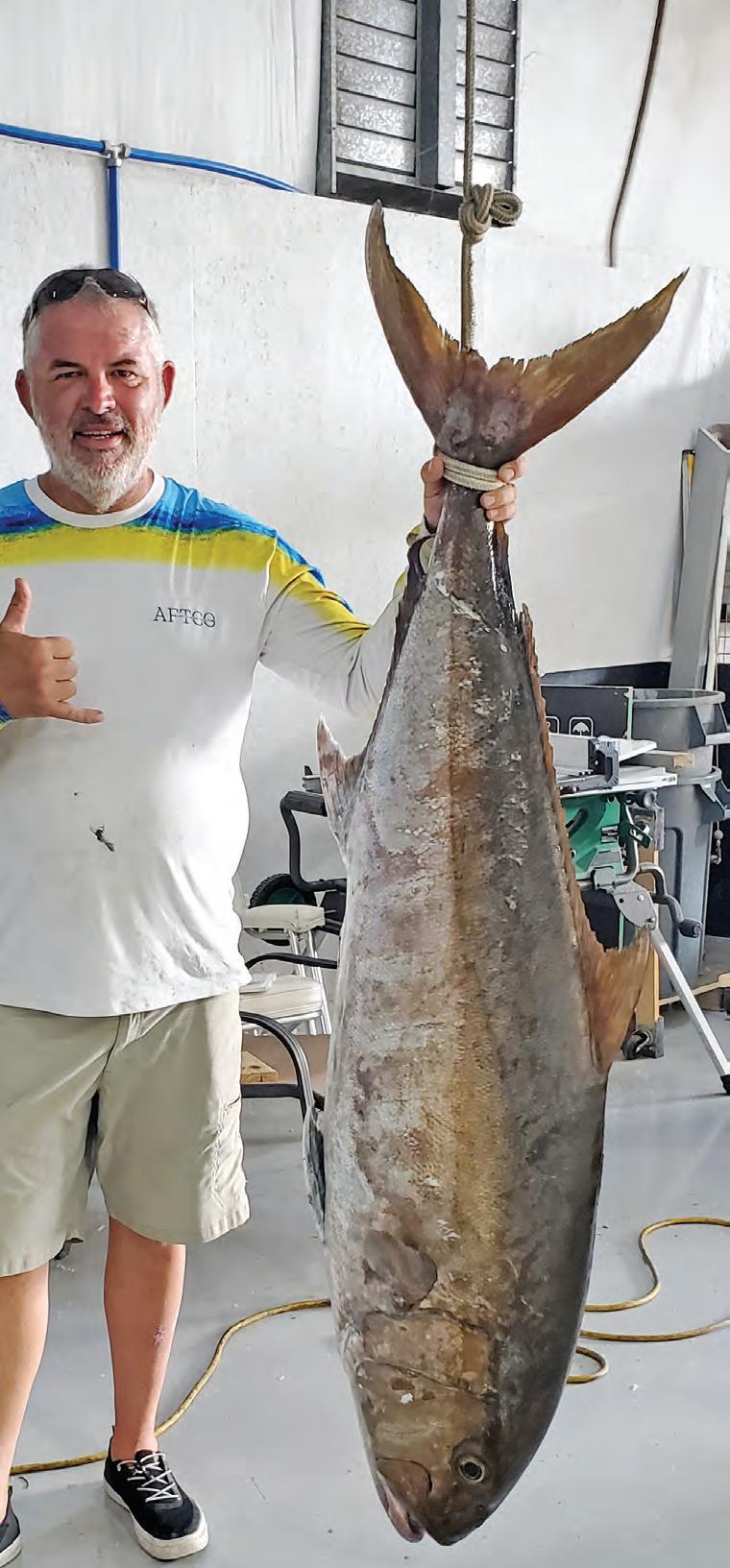




Rainshadow Rod Blanks from Batson Enterprises have a 25 year track record of delivering custom-level quality, high performance, and value to the world’s premier fishing rod producers and elite anglers. Batson has combined the industry’s best line up of rod blanks and components with direct access to our network of professional rod builders that make awesome rods happen. Click to visit us online, browse rod blank and component options, and get in contact with the best fishing rod creators in the business.







Throughout the year, the Florida Keys provide excellent opportunities to target billfish.
Sailfish can be found year-round, but are reliably targeted in late autumn through the spring. They are found near and/or over the reef, feasting on ballyhoo in shallower waters.
Swordfishing is great any time of the year, as long as the weather accommodates the long run out to the deepwater ledges. Targeting them during the daytime consists of dropping a bait down to the bottom, whereas during the nighttime, their
desired depths vary all the way to the surface in this same area.
Marlin fishing is doable during the summer months, but certainly less than reliable. They are often hooked as bycatch while fishing for the mahi or tuna on which they are feeding.
I recently had the pleasure of taking a trip offshore to solely target marlin and swordfish. We had two fishermen on board who were first timers to targeting both of these species. It was interesting watching them go through the bipolar swings of a full


day of billfishing. They were there to assist and learn, and I got to watch them enjoy and suffer through the full experience.
Initially, there was optimism as the sun was rising and we began deploying an elaborate trolling spread. The setup must have seemed fantastical to a newcomer, with the giant lures, strange looking teasers, and lines coming from everywhere on the boat, like we were captained by a coffee-fueled spider. The day was young, the spread was a work of art, and the newbies had no reason to doubt our chances.
The frustration soon followed. Just as we were about to wrap up marlin trolling and head to the swordgrounds, we passed through a gorgeous weed line full of tuna birds. It looked like our best chance of the day, and it likely was, until the right rigger caught grass. Upon a gentle retrieve to clear the line, it popped the
rigger and fell through the spread at the worst time. It attempted to mate with the teaser. We packed up the spread in the middle of the giant flock of birds that mocked us for quitting. Ahh, disappointment. We were just in time to hit the swordgrounds and begin the emotional cycle again.
Our next elaborate setup would be dropped in 1,500 feet for a swordfish, and the doe eyes of optimism made their next appearance.
The dance between doubt, boredom and forced optimism was the mood of the day, as our first bite didn’t occur until after 4 p.m. It was a heavy hit, a reel-stopping, drag-pulling, set-up-the-harpoon type hit that had the boat giggling like children. Everyone was informed of procedure and was ready to take on duties when, 100-feet from the weight, the rod tip bounced up and everyone experienced gut-
wrenching heartbreak.
On the next drift, we hooked up again, and everyone quietly held on to their excitement until the fish hit the deck. I don’t think I need to explain the feeling in that next moment. It was the one we were looking for, and it led to high fives and smiles all around.
In the end, we all took home satisfaction, exhaustion and big bags of meat.
Hunting swimming unicorns is handsdown my favorite type of fishing. If you want to experience the rollercoaster of emotions and take your shot at a fish of a lifetime, give me a call at Sweet E’nuf Charters.

Capt. Quinlyn Haddon guides with Sweet E’Nuf Charters, Marathon, Florida Keys. www.captainquinlyn.com; @captainquinlyn; (504) 920-6342.
























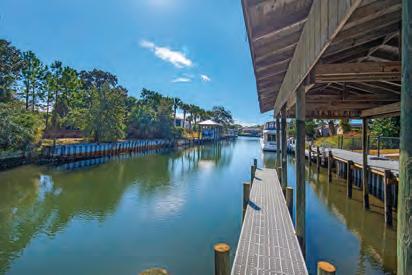

Be it red snapper season, Blue Angels air shows, or everyday exploration of the miles of Pensacola Beach just three miles away, fishing is a huge part of Emerald Coast Getaways’ Life on the Water vacation rental, and the creation of this property kept that in mind for the discriminating angler and boater.
Located on the Gulf Breeze peninsula between Pensacola Beach and Pensacola, Life on the Water is situated on a deep water canal, with 120 ft. of brand new dockage plus 30 feet under boat house cover, there’s plenty of protected room for two+ boats. Your boat will be secure, protected from open bay beatings, yet less than two minutes to open water and three miles to Flounders, Pensacola beaches, and the various restaurants accessed via boat. The property has two driveways, so trailer parking is available, with the Oriole Beach Boat Ramp one mile away, and two marinas with fuel within a five minute boat ride. Life on the Water also boasts a custom fishing cleaning station, power and water for the boats, and there’s even a lower dock landing for the kayaker and paddle boarder. Just out the canal are miles of grass flats with great fishing for speckled trout and redfish. There’s even a pinfish trap on the dock for bait!
If you decide not to trailer your boat, rent a boat! Pensacola Pontoons will deliver a boat right to our dock. Just say when and they will get it delivered. Lets get you on the water!
Guests will fall in love with the ultimate outdoor space featuring
a pet friendly fenced-in yard (pet fee does apply), upstairs and downstairs entertainment decks, 2 gas grills and private pool overlooking the water.
From the coastal decor to the amazing outdoor spaces, this 3,143 sq. ft, 5 bedroom/3 bath home is sure to impress. Just released to the market, this multi-level home accommodates 12 guests comfortably allowing plenty of space for everyone. This kitchen is well stocked and fit for a chef, comes complete with the stainless-steel appliances, Calphalon cookware and beautiful quartz counter tops. The open concept design allows the perfect space to interact with family and friends.
No detail was overlooked in the design and décor, a stately home in a charming neighborhood, making this an unforgettable vacation location! Life on the Water will become your families hidden gem. We truly look forward to hosting your stay!



Scallop season is underway for most of Florida’s Gulf Coast, and the reports we are getting so far are mixed—but mostly good—with some areas experiencing outstanding scalloping in terms of numbers, size and water conditions.
Scallops are regionally managed by the state, so different zones along the Gulf Coast have different seasons, with most remaining open well into September. There’s still plenty of time, plenty of scallops and plenty of places to go if you’re interested in an underwater egg hunt. Keep in mind, weather and water conditions can change quickly, and it can dramatically change the prospects for finding bay scallops. Plan your trip accordingly.
Starting down south in Pasco County, the
Anclote River area is apparently on fire this summer. Following a mediocre season last year, we’re hearing people rave about quick limits and good-sized scallops coming from shallow water. The season opened July 10 in the Pasco Zone, and early on at least one person called it the best scalloping she’s ever experienced. These are big scallops, too, and we’ve heard talk of throwing back legal-sized scallops to find bigger ones. In mid-July, the shells were in as little as 4 feet of water, and with such a good early season, there should be some left up until the season closes Aug. 16.
Just to the north, Hernando County scallopers were off to a slow start, but a little farther up the coast, the Crystal River to Homosassa area was very productive. We’re
hearing reports of scads of scallops in as little as 3 feet, with a majority of boats concentrating in the 7-foot depths. The size has been good, and it has apparently been difficult to find an undersized shell. With good weather and water conditions, good scalloping should hopefully last until the season closes Sept. 24.
We are also hearing good things farther north out of Keaton Beach and Steinhatchee, where the scallops are apparently very thick and close, although they might be trending smaller this year depending on your location. Limits in an hour or less were reported, with scallops hanging out in grass at 3- to 6-foot depths. The Fenholloway-Suwannee River Zone opened June 15 and will close on Labor Day.
In the big bend, reports have not been great

out of the St. Marks area, where heavy freshwater influx, low salinity and poor clarity are being blamed for scarce finds during the early season. Some are pointing to better days ahead in late summer. As wind and water conditions change, scallops holed up in the 15-foot depths sometimes shift closer in, where they are easier to find. The Franklin-NW Taylor County Zone remains open until Sept. 24.
Finally, over to Gulf County and Port St. Joe, the season opens Aug. 16 and runs through Sept. 24. There’s nothing yet to report, but historically this zone has been a good late-season option for grass flats that haven’t been picked over yet. For seasons and regulations, go to MyFWC.com.



From boating and fishing to scalloping and wildlife encounters, Plantation on Crystal River is an ideal setting for travelers of all ages and interests to enjoy endless outdoor activities. To follow is just a sampling of the abundance of available outdoor pursuits.
BOATING: With more than 25,000 accessible acres of waterways, including Crystal River and Kings Bay, Plantation on Crystal River is a boater’s paradise. In addition to scenic river tours from Plantation Adventure Center & Dive Shop, kayaks, jon boats and pontoon boats can be rented by guests who want to explore on their own.
FISHING: With Central Florida fishing at its finest, Plantation on Crystal River is located alongside the Crystal River inlets and Kings Bay, just a short distance from local lakes and the Gulf of Mexico. Whether by land or by sea, anglers can cast a line for bass, grouper, snook, flounder, redfish and more. At the end of a successful day of fishing, Plantation’s chefs will be happy to prepare the fresh catch for the guest’s dining pleasure.


GOLF: Guests can tee off on the resort’s traditional Florida-style 18-hole championship course. Surrounded by native plants and oaks, the championship course challenges guests with a number of difficult fairways and waterways, including the course’s signature No. 11 hole. The Original Golf SchoolTM at Plantation on Crystal River accommodates players of all levels, with experienced professionals offering on-course instruction, with no more than four students per professional instructor.
SCALLOPING: There is no better place to go scalloping on Florida’s Gulf Coast than Plantation on Crystal River. Taking place in shallow waters, scalloping is a fun family activity that only requires a snorkel, net and a pair of fins; no previous experience is needed. Scalloping does require a special permit, but licensed group tours and charters are available
for those without a license. Scalloping season is typically July 1 to September 24.
Plantation on Crystal River’s Adventure Center & Dive Shop provides guests with a once-in-alifetime opportunity to swim and interact with threatened West Indian Manatees in the waters of Crystal River and Kings Bay. Snorkelers will find many of the gentle creatures in the crystalclear spring waters migrate during cooler winter months with some that stay year-round. The manatees can also be easily observed from any part of the Plantation’s expansive sea wall and gazebo point.
Countless on-property amenities also provide entertainment to guests at Plantation on Crystal River. Highlights include a scenic, lagoon-style swimming pool overlooking the river, sand volleyball court, horseshoes, shuffleboard, oversized outdoor chess and checkers and a regulation croquet court. Nearby attractions include Three Sister Springs State Park, Crystal River Archaeological State Park, Homosassa Springs State Wildlife Park, Coastal Heritage Museum, Weeki Wachee and the Yulee Sugar Mill Ruins State Park.
Transportation is convenient with nearby international airports, including Tampa International Airport only 70 miles away, and Orlando International airport just 90 miles away.
Plantation Resort on Crystal River offers unforgettable experiences for travelers of all ages and interests to enjoy endless outdoor activities. From boating and fishing to scalloping and wildlife encounters, visitors from around the globe travel to Florida's Nature Coast to enjoy all it has to offer. Reflect on the peaceful joy you'll feel swimming alongside a manatee and her baby, the rush of adrenaline after hooking an evasive gag grouper in the shallow waters of the Gulf...there are so many memories waiting for you here!
Guests will find a full-service resort with classic rooms, excellent dining, a lagoon-style pool, an Aveda spa, and a traditional golf course. Discover all there is to create your next great vacation memory.











Scallop Season Is Here!!! (July 1 – Sept 24, 2024) DON’T MISS OUT! Book Your Trip Now! Our reservation team can help you make all the arrangements. We have the best guides that will take you out, which is the best way to ensure a great time on the water. We can also accommodate those do-ityourself folks with a boat ramp and seawall tie-ups if you bring your boat.
Tim Barefoot
Fishing under lights at night is a good thing to do 12 months out of the year, but it is especially good during the hot summer months, when daytime temperatures can make standing on the deck in the glaring sun less than appealing.
During the hottest days of the year, snook, trout and redfish follow bait directly to bright light, like moths to the porch light. Being that I sell boat lifts for a living, I suggest installing the biggest brightest lights on your docks that you can. Some systems can be controlled remotely with an app on your phone.
To turn your dock into a fishing Mecca, you must learn to use existing facilities for maximum return on investment. You can also feed shrimp and minnows with cornmeal and keep them attracted with lights at night. Once you get the bait concentrated, you will have the fish concentrated as well. For more information on this, check out my Youtube channel.
If you don’t have a dock, you can still light up the night with powerful and lightweight lithium battery spotlights or purpose-made fishing lights that run on your boat’s electrical system. Some of these are submersible.
Turn the lights on and hang out for a few minutes. You’ll be amazed at how many

baitfish show up.
I like an artificial shrimp jig or live shrimp best. Live shrimp are the most effective bait out there, but I like artificials because it limits the amount of tackle and hassle. A good technique is to drift down a series of lighted docks and cast to the lights. When you find fish, concentrate on that area with repeated drifts.

A word of advice: Be quiet! Older and wiser snook or trout are not stupid. Use the trolling motor only when it’s needed and not at all when possible. In my humble opinion, fish become wary to the sound of a trolling motor. Remain calm and make as little noise as possible on your drifts. Don’t play music, stomp around on the deck, talk loudly or slam cooler lids.
The light attracts the fish and catching them is up to you. Match the hatch by taking notice of the type and size of the bait you see. This might require casting smaller jigs or even small shrimp or baitfish flies when the fish get picky.
This is the perfect atmosphere for showing children how to catch fish. The visual aspect of this technique is very entertaining and educational. Check out my Youtube video for a perfect example of fishing a welllighted dock properly.
For more information, visit barefootcatsandtackle.com and check out his YouTube channel.




Ideal for kayaks, canoes, paddleboards, dinghies and inflatables.
Drawing to be held July 31, 2024. Winner announced on Facebook.


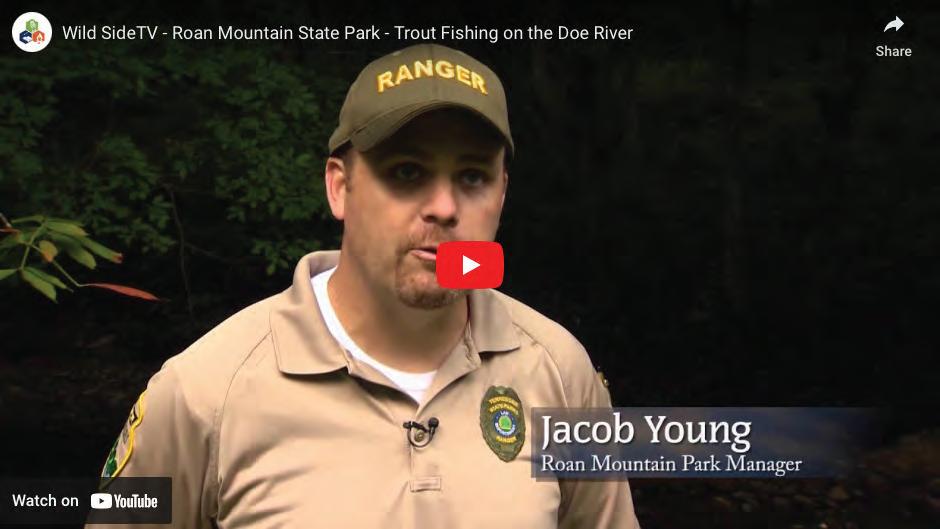



When it comes to freshwater fishing, Tennessee has an embarrassment of riches. From massive rivers and reservoirs to small ponds and high-elevation trout streams, the state is home to incredible fishing opportunities. Tennessee State Parks are excellent base camps for on-the-water adventures. They offer amenities for lodging or camping, and many of them are right on the water, with unparalleled access to some of the best fisheries in the nation.
Here are a few great Tennessee State Park fishing destinations:
• ROAN MOUNTAIN STATE PARK: Fed from elevations of around 6,000 feet, the Doe River runs clear and cold through the center of Roan Mountain State Park. Its tributaries are home to healthy year-round populations of native brook trout and both wild and stocked rainbows and browns.
The 2,000-acre park is dominated by hardwood forests and rugged ridgelines. It is a beautiful place to be, whether you’re casting flies or just camping and going for a hike.
• HARRISON BAY STATE PARK: Just outside of Chattanooga, Harrison Bay is a 1,200-acre park with 40 miles of shoreline on Chickamauga Lake. If you’re a bass angler, you know “The Chick’s” reputation as a big-bass factory. It is ranked among the best largemouth fisheries in the world.
The massive reservoir is also a great fishery for smallmouth bass, striped bass, crappie, walleye and big Tennessee River catfish.
• ROCK ISLAND STATE PARK: North of McMinnville, Rock Island is an 883-acre state park on the headwaters of Center Hill Lake, where the Caney Fork, Collins and Rocky rivers meet. These rivers and the lake itself are some of the best fisheries in this part of the world for “The Fish of 10,000 casts.” If the mighty muskellunge is on your hit list, this is a good place to chase one.
The park is also a fantastic place to catch walleye when the rivers fill up with spawning walleye in early spring. There’s plenty of bank space to fish from, and it’s a great area for kayaks, canoes and boats.
• NORRIS DAM STATE PARK: A short drive from Knoxville, Norris Dam State Park is 4,000 acres on Norris Lake. The lake is renowned for excellent smallmouth bass fishing as well as good fishing for largemouth bass, catfish, striped bass and walleye.
If that isn’t enough get you excited, the Clinch River downstream of Norris Dam is one of the best tailwater trout fisheries in the Southeast.
These four Tennessee State Parks are just the tip of the iceberg. With fishing as a primary draw to more than 40 state parks in the volunteer state, you’ll need to do some research to plan your next adventure. For information, visit tnstateparks.com.
By A. deGruchy


If you’re craving the thrill of the hunt and the taste of fresh lobster, the Florida Keys are your paradise. Here’s a quick guide to help you find these delectable critters, catch them, and turn them into a simple, yet fancy meal.
First things first, you’ll need the right gear. Grab a tickle stick, to push lobsters out of their hiding spots, and a lobster net to scoop them up once they’re on the move. Snorkel gear is essential for getting up close and personal with these lobsters, and don’t
forget gloves to protect your hands from sharp rocks and lobster spines. Lastly, a measuring device is required to make sure your catch is legal size. They are measured in carapace length, and it’s important to know how to measure them before gathering them.
Now, let’s talk lobster hotspots. Spiny lobsters love to hide in crevices, under ledges, and around coral reefs. The regular lobster season runs from August to March. Once you have your snorkeling gear, you can generally find them in as shallow as 6 feet
deep. Keep an eye out for their long antennae sticking out from their hiding places, and then gently use your tickle stick to encourage them out before swiftly scooping them up with your net. Their behavior is to swim away, naturally, and spiny lobsters use their tail to swim backward. Make sure your net is in position to anticipate them swimming backward into your trap. Once they’re in it, it’s also important to close the netting to prevent any slip ups and runaways.
Once you’ve got your catch, it’s time to enjoy. The easiest way to prepare lobster is to grill them. Split the lobsters in half lengthwise, brush with a mixture of melted butter, garlic and a squeeze of lemon juice and grill them shell-side down until the meat is opaque and slightly charred. Serve with a side of melted butter for dipping, and you’ve got yourself a fancy feast.
So, gear up, dive in, and get ready to enjoy the freshest lobster you’ve ever tasted. Happy hunting!
Visit www.myfwc.com for more information and updates on Florida Spiny Lobster regulations.







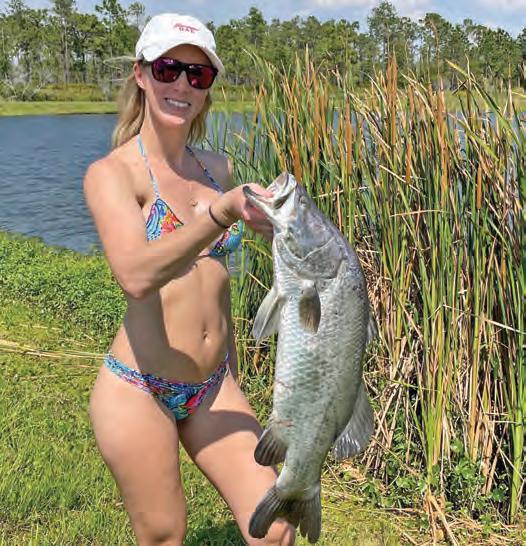


If you’re an avid angler seeking a one-of-a-kind fishing adventure, look no further than Osceola Outback Adventures. Located in Central Florida, just 45 minutes from the Orlando airport, Disney, and other attractions, this full-time guide service offers some of the Sunshine State’s most unique fishing experiences.
At Osceola Outback, you can embark on an unforgettable barramundi fishing expedition. What makes this experience truly special? Well, Osceola Outback is the first and only Barramundi guide service in North America. Native to Australia and weighing as much as 100 pounds, barramundi are hard-hitting, drag-screaming fighters that love to leap out of the water to display their power. The property is a working farm, ensuring that no angler goes home without hooking up multiple times. It’s a rare opportunity to catch these impressive fish!
Florida is a go-to state for bowfishing, thanks to its warm climate and abundant “non-game” fish. Osceola Outback offers both daytime and nighttime bowfishing trips. You’ll have the chance to shoot tilapia, gar, bowfin, and catfish in the state’s extensive network of lakes, ponds, and rivers.
Airboat Bass Fishing: Explore Uncharted Waters
For an adrenaline-pumping experience, try airboat bass

fishing. Osceola Outback’s custom-built airboats are equipped with 8-foot Blade Power-poles, trolling motors, and full walkaround fishing decks. With seating for three anglers and 500-horsepower motors, these boats can take you to places you’ve never explored before. It’s common for two anglers to land 60+ bass in a single 4-hour trip. Keep an eye out for alligators, wading birds, and birds of prey!
Known worldwide for huge stringers of largemouth bass, the Kissimmee Chain of Lakes offers fantastic fishing opportunities. Osceola Outback provides fully rigged bass boats, and their captains are United States Coast Guard certified and licensed. You can choose between fishing with artificial lures or locally caught live wild shiners.
Here’s something truly unique: Osceola Outback is the only place in the world where anglers can land an International Inshore Slam. This prestigious achievement consists of catching barramundi, peacock bass, and largemouth bass all in one location. With barramundi native to Australia and weighing up to 100 pounds, this is an angler’s dream come true.
Whether you’re a seasoned angler or a first-timer, Osceola Outback Adventures promises unforgettable fishing experiences. So grab your gear, cast your line, and get ready for an adventure like no other!

845 LB. BLUE EARNS $1.27 MILLION

An 845-pound blue marlin earned a combined purse of $1.27 million for the 54 Hatteras Dogs Bollocks during the 2024 Blue Marlin World Cup. Fishing out of the Cape Verde Islands, Stuart Simpson captained the winning vessel, with Ron Kawaja, founder of Pelagic Gear, on the rod for the winning catch. For the second year in a row, a new payout record was set during the one-day worldwide tournament.
The team’s fish, which measured 126 inches long (lower jaw to fork length) with a 70-inch girth, was fooled by a Viper Bonze Lure. Dogs Bollocks won both the World Cup and the Big Blue Challenge divisions. The field consisted of 162 teams competing this year.
Dogs Bollocks is sharing a portion of their payout with two local deckhands, both of whom intend to use their share of the prize money to build houses and to send their kids to college. This story only adds to what was an overall exciting day of fishing and a great way to celebrate July 4th and the World Cup’s 40th anniversary.
The Blue Marlin World Cup is a one-day fishing tournament conducted globally. Only blue marlin weighing more than 500 pounds are eligible. Competing teams fish in their respective time zones from 8:30 am to 4:30 pm. Entries are weighed on certified government scales and
verified in their respective locales.
The Tournament entry fee for the World Cup is $5,000 per team. The optional Big Blue Challenge (BBC) is an additional $8,000. Dogs Bollocks caught the biggest marlin of the day and took home all the prize money as the winner of the BBC and as the winner of the Tournament. Of the 162 teams overall, 97 were entered in the optional Big Blue Challenge.
Sorted, fishing out of Madeira, reported an early morning catch weighing 557 pounds. Laura Russell, competing aboard Debatable with Team Hit & Run, weighed a 636-pounder while fishing in the Bermuda Billfish Blast. Big Deal, also fishing in Bermuda, weighed a 673-pound blue late after a four-hour fight. None of those fish would come close to Kawaja’s hefty trophy.
Two historic giant blue hot spots were well represented among this year’s fleet. Bermuda boasted 49 teams, followed by 42 in Hawaii and 20 across the Gulf of Mexico. Madeira and Cape Verde fielded 18 and 17 teams, respectively. In addition to Bermuda and the United States, teams fished from Portugal (Madeira and Cape Verde), The Bahamas and Senegal.
The 2025 Blue Marlin World Cup will be held July 4, 2025. For more information, visit www.bluemarlinworldcup.com.


You want AI Routing! Let TZ MAPS with AI Routing make route planning a snap. Don’t take our word for it. Scan here to see for yourself how easy it is!

Furuno has again raised the bar for the most powerful, easiest-to-use Multi Function Displays (MFDs) with the new NavNet TZtouchXL. Five sizes of MFDs provide all the functionality boaters desire and never-before-seen features.
An all-new chart offering called TZ MAPS sets these MFDs far ahead of the field. Navigators have complete control of data they download, such as raster or vector charts, satellite photos and bathymetric data. Plus, they can select specific areas to keep updated. Objects can be turned on and off in the Layers menu with a single swipe on the display. Users can create custom objects or update charted objects, on the system on the fly. Custom objects can be shared with other users through
offers “off the charts” bathymetric data with contours that can be easily configured to a resolution three times better than anything else on the market. Bathymetric data can be overlaid onto navigation charts. All of this can be rendered with custom color palettes and terrain shading.
Purchase of TZ MAPS areas also unlocks AI Routing to plan routes. The free TZ iBoat app for mobile devices allows at-home planning that transfers to TZtouchXL. With a free TimeZero account, waypoints and routes can be backed up or retrieved from the cloud. Charts can be purchased directly from the MFD!
DRS Radar connection unlocks two new safety features: Risk Visualizer™ and
AI Avoidance Route™. These two features provide 360° representation of collision risks and a route around them that can be sent to a Furuno NAVpilot autopilot.
The series comprises five MFDs with displays from 10” to 24”. All feature a powerful hexacore processor for lightningfast response.
All magnetron or Solid-State Doppler Radars, high-powered Fish Finders, AIS, Autopilot, and Deep Water Multibeam Sonar options of NavNet TZtouch3 are compatible with TZtouchXL. Many of the must-have features are also available, including Target Analyzer™, Bird Mode, Rain Mode, and PIN Code Lock. The TZT10X, TZT13X, and TZT16X feature a built-in 1kW TruEcho CHIRP or CW Fish Finder and built-in 235kHz or 455kHz CHIRP Side-Scan. Two new remote-control options are also available.

To learn more, visit: www.NavNet.com



NOAA Fisheries is heralding the recovery of Pacific bluefin tuna stocks after the international species rebuilding plan surpassed a major milestone more than a decade ahead of schedule. Management, by the way, includes recreational angler access to the species, with a two-fish daily bag limit in California.
At a May meeting in Victoria, Canada, a new stock assessment was finalized, which confirmed that the stock reached its second rebuilding target in 2021. This goal to reach this target was originally set for 2034. With current management measures in place, the population growth is expected to continue. A NOAA press release even suggested the potential for increased harvest in future years.
“This is an amazingly resilient fish and the new assessment is showing us that. While the population is thriving, ongoing monitoring of data quality is essential to ensure the continued accuracy of the assessment,” said Dr. Huihua Lee, who led the U.S. stock assessment work from NOAA Fisheries’ Southwest Fisheries Science Center. “It also demonstrates the success of coordinated scientific efforts taken by the member countries through the ISC.”
The ISC is the International Scientific Committee for Tuna and Tuna-Like Species in the North Pacific Ocean. Because of the highly migratory nature of Pacific bluefin, international cooperation was required across the Pacific to reverse overfishing for the prized species.
Pacific bluefin are the largest species of tuna in the Pacific with adults reaching nearly 10 feet in length and 990 pounds. Their habitat spans the temperate waters of the North Pacific—from East Asia to the North American West Coast. They are also among the fastest swimming species on the planet and live an average of 15 years.
In the United States, recreational and commercial vessels primarily land Pacific bluefin tuna using hook and line or purse seines. U.S. commercial catch limits are very low in comparison to other member nations, with a low point of just 114 metric tons allowed in 2018 rising to 720 metric tons for 2024.
In 2022, U.S. commercial fishers harvested 368 metric tons of Pacific bluefin tuna, grossing more than $2.2 million in on-thedock revenue. This figure was well below

the total catch limit of 523 metric tons. The total U.S. fishing effort, both recreational and commercial, represented a small slice of total Pacific bluefin tuna landings that year. According to ISC charts, Chinese and Japanese vessels harvested more than 15,000 metric tons each, while Korea and Mexico reported about 5,000 metric tons each.
When harvested on the West Coast, Pacific bluefin tuna have already traversed the Pacific from their spawning grounds between central Japan and the northern Philippines and in the Sea of Japan. They arrive off the coast of Baja California, Mexico, at around 1 year old. They stay in the open waters off the United States and Mexico, feeding on squid, sardines, saury and herring, among other fish. Once 3 to 5 years old, they migrate back to their spawning grounds—a nearly 6,000-mile journey that takes as little as 55 days for the speedy fish.
Bluefin are assessed based on their unfished spawning stock biomass—the theoretical amount of fish there would be in the absence of fishing. Overfishing in the late 1990s and 2000s reduced the estimated bluefin biomass to a historic low of 2 percent of its potential unfished level in 2009–2012. This alarming decline prompted multilateral action
beginning in 2011 to stem overfishing. The goal was to rebuild to at least 20 percent of the spawning stock biomass by 2034.
Rebuilding happened much faster than expected. With each spawning female laying millions of eggs per batch, Pacific bluefin tuna possess the natural ability to rebound under reduced fishing pressure.
The recent stock assessment shows that in 2022 the number of spawning bluefin reached 23.2 percent of the potential unfished spawning stock. This milestone marks the first time the population has surpassed the associated maximum sustainable yield level for the species. The rapid rebuilding of the Pacific bluefin stock suggests the possibility of increased harvests in future years.
“There is a point where you can find a balance between abundant harvest while also allowing the stock to grow in perpetuity, and we’ve now exceeded that point,” said Celia Barroso, a Fishery Policy Analyst at the NOAA Fisheries West Coast Region.
There is an international meeting this month in Japan to recommend conservation and management measures for 2025 and beyond. Those recommendations must then be adopted at separate meetings of the different commissions later this year.






By Ben Martin, Editor in Chief
assionate anglers are in all elements of our society. The angling community is inclusive of all socioeconomic strata and political preferences. It’s nonracially biased, non-gender specific or restrictive, and passionate anglers are found within all professions.
I recently had the opportunity to interview one of Hollywood’s up-andcoming young talents, Alex Neustaedter. You may remember him from his roles in American Rust, Colony, Ithaca, Agents of S.H.I.E.L.D. and a slew of others, but what surprised me during our interview is all he wanted to talk about was fishing.
From the memory of his first fish, a sun perch caught from Lake of the Ozarks, to his offshore kingfish in South Florida, to his current fly fishing endeavors Out West, I found myself thinking, “He’s one of us.”
That commonality within the sport of fishing is so rare in today’s era of divisiveness and exclusionary mentality that I feel compelled to salute us, anglers of all walks of life sharing the joys of something we can all agree on. Fishing is a great sport, and anglers make up a great community.
For more information on Alex Neustaedter and his cinematic career, visit https://www.imdb.com/name/nm2614237.






ICAST, the world’s largest fishing trade show, includes a showcase of the latest and greatest in fishing gear. At this year’s July show in Orlando, PENN’s Fathom Electric reel wowed the judges of the New Product Showcase, earning the storied brand the prestigious “Overall Best of Show” award for ICAST 2024.


During the New Product Showcase, hundreds of new offerings from the most respected brands are put on display, and members of the media vote on their favorite new gear for 2024. The showcase is huge, with categories in freshwater and salt and products that range from clothing and coolers to rods, reels, terminal tackle and everything else an angler might want or need. The products are first voted on by category, and the favorites from each category are awarded “Best of Category.” The judges then select their favorite new item from the “Best of Category” winners for the “Overall Best of Show” award.
It is a big deal, and the Fathom Electric is the first

“There have been a lot of innovations in other categories in the past few years,” said Penn Brand Manager Ben Joyce. “For the winner to actually be a reel means a lot to us.”
Joyce said the Fathom Electric was under development for four years before finally making its public debut at ICAST 2024.


“We started from the ground up,” he said. “Battery technology finally improved to the point where we could put something portable on the market, but PENN didn’t really have a history with battery stuff. We had to learn about how much power we could put through it, how much torque it could take.”
PENN touts its new Fathom Electric as the first and only cordless electric reel with an integrated battery. Deep dropping has gained popularity in recent years, and the reel makes
fishing the depths more accessible with a range of features that make it easier to fish down to 1,000 feet. Additionally, the reel performs very well for other styles that benefit from electric power, including kite fishing and light trolling.
The PENN Fathom Electric is powered by a Lithium-Ion battery with a 5aH capacity, offering long-lasting performance with an optional plug-in backup. There’s a wide variety of programmable modes, to custom-set for each drop to meet the needs of the day. Key
features like auto-stop for hands-free retrieves, override for manual jigging, line counter providing true line-out measurement in feet or meters give anglers the power and performance they need for modern fishing techniques. It has an excellent maximum winding power of 35 pounds and can achieve speeds of up to 750 feet per minute, varying by reel size.
To learn more, visit www.pennfishing.com

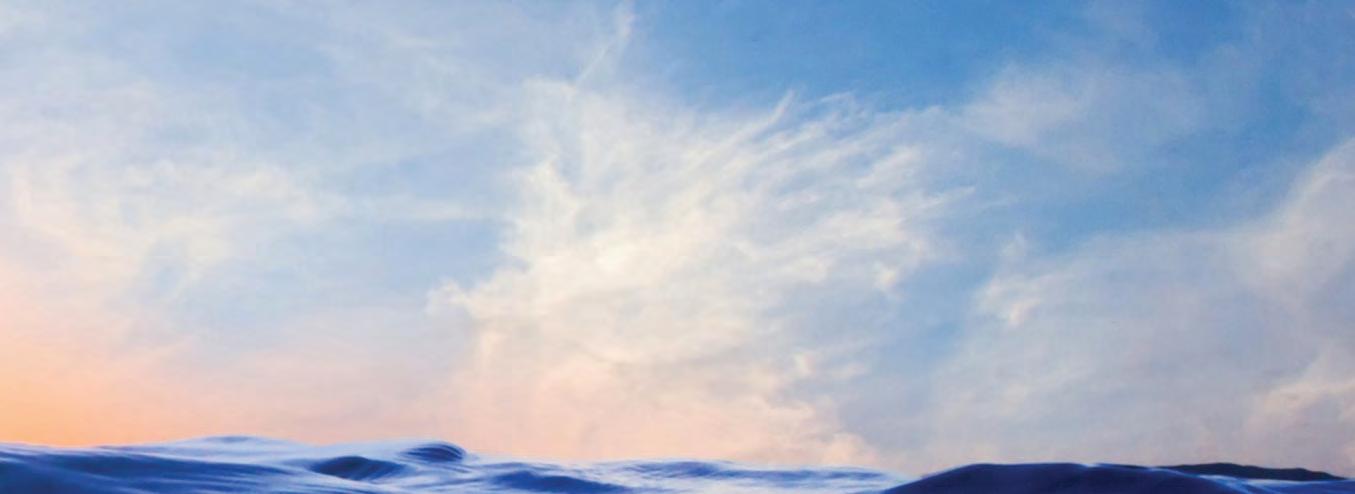



SALTWATER REEL
PENN Fathom Electric www.pennfishing.com
SALTWATER ROD
Dominion Rods E-Rod Jigging & Bottom Rod w/integrated power supply Erodfishing.com
SALTWATER SOFT LURE
Z-Man PrawnstarZ Zmanfishing.com
SALTWATER HARD LURE
Okuma FishLab BBZ Hard Mullet Swimbait Fishlabtackle.com
FRESHWATER ROD
Ugly Stik GX2 Spinning Rod www.uglystik.com
FRESHWATER REEL
Shimano Vanford FA Fish.shimano.com
FRESHWATER SOFT LURE
Z-Man Shadtron LT Swimbait Zmanfishing.com
FRESHWATER HARD LURE
Berkley Krej www.berkley-fishing.com
ROD AND REEL COMBO
St. Croix GXR Bass Systems Stcroixrods.com
LINE
Rapala Sufix Revolve Ultra Thin Finesse Braid www.rapala.com
TERMINAL TACKLE
VMC Redline Series Tungsten Swimbait Jig www.rapala.com
TACKLE MANAGEMENT
BKK Hooks OCD Tackle Storage System www.icastfishing.org
KID’S TACKLE
Create-A-Lure Shark Edition www.icastfishing.org
ICE FISHING
Garmin Panoptix PS22-IF Ice Fishing Bundle www.garmin.com
TACKLE AND COMPONENTS
Do-It Molds Hover Jig Mold store.do-itmolds.com
FLY-FISHING RODS
Temple Fork Outfitters Elevare Tforods.com
FLY-FISHING REELS
Hardy Averon Fly Reel www.hardyfishing.com
FLY-FISHING ROD & REEL COMBO
Shakespeare Cedar Canyon Fly Combo www.purefishing.com
FLY LINES, LEADERS, TIPPET AND LINE ACCESSORIES
Scientific Anglers Magnitude Smooth Tarpon Full Clear Scientificanglers.com
FLY-FISHING TOOLS AND ACCESSORIES
AFN Fishing & Outdoors Xtreme Pliers 140mm www.icastfishing.org
FLY TYING VISES, TOOLS AND MATERIALS
Renzetti C2303-MR www.renzetti.com
FLY FISHING CHEST PACK, SLING, WAIST PACK & VEST
Simms Headwaters Sling Pack www.icastfishing.org

FLY-FISHING BACKPACKS, BAGS AND LUGGAGE
Simms Tailwind Rod & Reel Vault www.icastfishing.org
FLY-FISHING WADERS AND WADING BOOTS
Grundéns Vector Zip Stockingfoot Wader Grundens.com


COLD WEATHER TECHNICAL APPAREL FOR MEN
Simms Pro Dry Suit www.simmsfishing.com
COLD WEATHER TECHNICAL APPAREL FOR WOMEN
AFTCO Armorloft Zip Hood www.aftco.com
WARM WEATHER TECHNICAL APPAREL FOR MEN
Grundéns Tough Sun Masked Hoodie www.icastfishing.org
WARM WEATHER TECHNICAL APPAREL FOR WOMEN
Simms Women’s Latitude Hoody www.icastfishing.org
FLY-FISHING TECHNICAL AND GENERAL APPAREL
Grundéns Portal GORE-TEX Wading Jacket www.icastfishing.org
LIFESTYLE APPAREL FOR MEN
AFTCO Coastal Layer Hood www.aftco.com
LIFESTYLE APPAREL FOR WOMEN
Under Armour UA Fish Pro Hybrid Women www.underarmour.com
Costa 580G Gold Mirrored Lens in Grand Catalina www.costadelmar.com
Under Armour UA Charged Shoreman Deck Boot www.underarmour.com
AND WATERCRAFT
Wilderness Systems Tactical Pro 128 www.icastfishing.org
KastKing Brutus Landing Net with Boat Hook Kastking.com
CUTLERY, HAND PLIERS OR TOOLS
Benchmade Water Collection www.benchmade.com
SOFT AND HARD COOLERS
Rugged Road 115 www.icastfishing.org
MOTORIZED BOATING ACCESSORIES
Power-Pole Dual Bladed ONE Pump Power-pole.com
NON-MOTORIZED BOATING ACCESSORIES

Connect-Ease YAK EASE
Power Pak Pro
Connect-ease.com
XPECE ONE Waterproof Fishing Drone www.icastfishing.org
Rapala USA Giant Lure www.icastfishing.org

































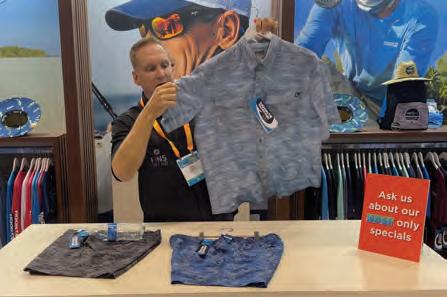










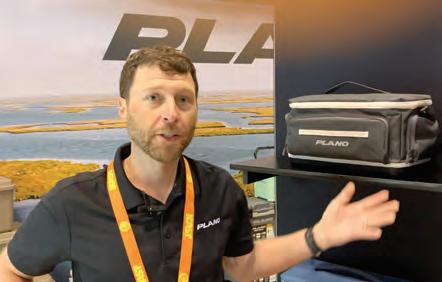




Terry at Plantation on Crystal River talks about the unique fishing experiences and latest at their resort on the Nature Coast of Florida

Bo with the latest at Sea Worx goes over the least gaffs, rigging and fishing Gear Equipment

Ricky introduces new products from Smith's Consumer Products. Including a dehooker, a sharpener, emergency release tool

Ryun Snyder goes over the The Diamond 8X Apex Micro-Braid and the Bridle-Buddy Bait Rigging Tool


Paul tell us why there's no worries when your away from your boat with Sensar Marine's award winning boat monitor. Always on. Always Monitoring

Also a new series of carbon bass rods

Ted Explains why Skuze is the lightest, most comfortable boat shoe in the industry

Ethan explains why Swivel Buttz ensures that the reel and rod are always in perfect alignment with the fishing line, offering an efficient and effortless trolling experience




Robert with Xanigo Marine goes over all the mold and mildew product prevention for your boat

ICAST 2024. What an amazing event for the Fishing Industry. Jammed packed attendance. Always the best trade show of the year


Thor with Toad Fish goes over all new products for fishing and for every product they sell they replant oyster beds for water quality and conservation

Xpece Fishing Drones are about to launch. It floats, flies and drops 10 pound baits a mile out and it's fully water proof The Coastal Angler Magazine ICAST Party at Fish on Fire was a BIG hit Wednesday night. Over a hundred invites enjoyed freshly caught

Joe at ZPRO Lithium Batteries goes over their battery line up covering boats from kayaks to big boats and more






Discover versatility, style and performance with the Sailfish 272 Center Console. The 272 sits on the revolutionary Sailfish VDS variable degree stepped hull design that delivers unmatched stability, agility, and efficiency on the water. Twin fish boxes, two livewells, tackle storage and bait prep station as well as ample rod holders assure the 272 is ready for any fishing or family adventure. See what makes Sailfish Boats different at SailfishBoats.com.



By Emily Hanzlik
This summer, I’ve had the opportunity to work on my passion for educating young anglers. There is a growing need to bring youth involvement to the sport, and here are some of the ways I’ve been able to target young anglers recently.
I am lucky to work with the International Game Fish Association (IGFA). Most people know this organization for keeping track of record fish, but they also teach families to fish. IGFA provides Passports Kits, which are allin-one teaching boxes with everything needed to put on a fishing clinic. These kits are sent all over the world, where individuals teach kids and families the basics.
Within the past few years, IGFA has partnered with the National Park Service to host fishing events. My coworkers and I travel to national parks to help them begin their teaching journey. We show them how to use the tools in the Passport Kit and help them run an education event. We average about 50 people at these events, and usually half of them are kids. First, families attend a basics-of-fishing clinic, and then everyone fishes!
My favorite thing from these clinics is how excited the kids are about learning to cast. I stand in front of them and tell them to aim at me like they are throwing a ball. Some kids are nervous, at first, but the fear goes away when they realize it is easy. It’s an amazing feeling knowing you helped change someone’s perspective.
There is also an online component to these events, which is a video of my coworkers and I fishing the local waters. Within the videos are lessons about rigs or lures that best fit the area. These videos are the backbone of our online
program, which guides new anglers through learning to fish.
In addition to working with IGFA, I also run my own charter, Emily Hanzlik Outdoors. My focus is to give kids a one-on-one experience learning to fish. Everything is from land at a local marina where I grew up fishing. I give kids tons of hands-on experiences and teach them about the surrounding environment.

I recently completed a trip with three young girls who had fished before but didn’t know the true beauty of it. I had some mini fish tanks set up that allowed them to view the tropical fish they caught. The youngest girl would catch her fish and immediately run it over to view it in the tank. Each time she would pull out a book I had given them and try to identify the species.
She would sit there for a few minutes admiring the fish before releasing them. I can positively say all three girls learned to appreciate the beauty of the fishery we have in south Florida. Take a kid fishing. It might be something they never forget!
Emily Rose Hanzlik has caught more than 60 IGFA world records in various categories. Find her on social media @emilyhanzlikoutdoors.



Forty-nine reservoirs stretch across the Tennessee Valley like a string of pearls. And for those who love to fish, those lakes are just as valuable. Whether it’s bass, crappie, walleye, or catfish, whether for sport, food, or just fun, you can find world-class lake fishing only hours away from any spot in the Tennessee Valley. From more than 11,000 miles of shoreline or while floating on more than 700,000 acres of water, residents and visitors will quickly learn why this area is considered one of the best fishing destinations in the U.S. and, some would say, the world.
Fishing from the shore can be restful and rewarding—and anyone can do it. All you need is a little intel about how to find a spot where the fish might be biting. Here are a few tips for successful shore fishing from the Tennessee Wildlife Resources Agency:
• Fish are often swimming near the shore in the spring and fall. If you’re fishing from the shore in the heat of summer, do it in the evening or early morning—or even after dark.
• Fish near-unique features such as docks, logs, trees, rocks, or rocky areas; aquatic vegetation; or places where creeks enter the water.
• When fishing in moving water, look at the surface for boils and breaks—this means there is some underwater structure blocking the current, which could be the perfect hiding place for fish.
• Begin fishing (casting) close and parallel to the bank, then work your way outward (fan casting) toward deeper water.
• If you don’t get any bites, try switching baits. If this doesn’t work, move to another hole.
• Wear polarized sunglasses so you’ll be able to see fish as well as submerged objects more clearly. (Your eyes will also be protected from the tackle.)
If you love outdoor sports—boating, hunting, fishing—and the natural world, or if you just like to observe wildlife, build birdhouses, maintain a bird feeder or are just curious about the critters in your backyard, the Tennessee Wildlife Resources Agency is here to help enrich your outdoor experience. Visit us at www.tn.gov/twra/





An angler trolling for striped bass hauled in a 127-pound, 6-ounce Arkansas state record paddlefish on June 15. The monster fish came from Beaver Lake in northwest Arkansas, and it crushed the existing record of 118 pounds.
Mike Schleeper inked his name in the record books while trolling brooder minnows, which are large shiners, about 30 feet deep near a point on the 28,000-acre lake. His friend and fishing buddy Tom Mayberry was there to help during the 45-minute fight.
“I’ve been fishing for stripers up here for about 13 years, and I’ve had the chance to catch some stripers over 30 pounds, but this was different,” Schleeper said. “It didn’t strip line and stop in surges like big stripers do, he just sort of pulled the rod down and kept going. I couldn’t turn him, so we had to follow him with the trolling motor for about the first 20 minutes.”
Once Schleeper did manage to sway the fish in his direction, the fight continued for nearly


another half-hour.
“It was a 45-minute fight altogether,” Schleeper said. “I’d thought maybe it was a really big striper, but then we could finally see it a little bit. It looked like a giant catfish at first, but as we got it closer to the boat we realized what it was.”
The giant paddlefish had been hooked in one of its pectoral fins incidentally while the anglers were trolling. Snagged fish often don’t count toward state records in many states, but paddlefish are accepted because these fish do not bite lures—they eat plankton—and catches on rod-and-reel are almost exclusively the result of snags.
When Schleeper and Mayberry finally got the fish to the side of the boat, they ran into a snag of their own.
“Our net wasn’t big enough for the fish,” Schleeper said. “Tom wrestled with that fish for a while trying to figure out a way to get it in the boat. At one point I told him to just cut the line because it wasn’t worth it. Tom was adamant
that we needed to get that fish in and report it.” Schleeper agreed with Mayberry and they finally worked a rope through the fish’s mouth to hoist it aboard.
“As soon as the fish fell to the bottom of the boat, the hook popped free,” Schleeper said. “We got really lucky.”
Paddlefish are the oldest surviving animal species in North America according to fossil records. In fact, paddlefish predate some dinosaurs (300 million years). Females may spawn only once every 4 to 7 years.
A recent regulation passed by the AGFC allows a limited, permit-based snagging season for paddlefish in the White River portion of Beaver Lake from the Twin Bridges Access to the Lake Sequoyah Dam April 15-June 15.
The world-record paddlefish weighed 164 pounds, 13 ounces. It was caught by Chad Williams at Missouri’s Lake of the Ozarks in March.












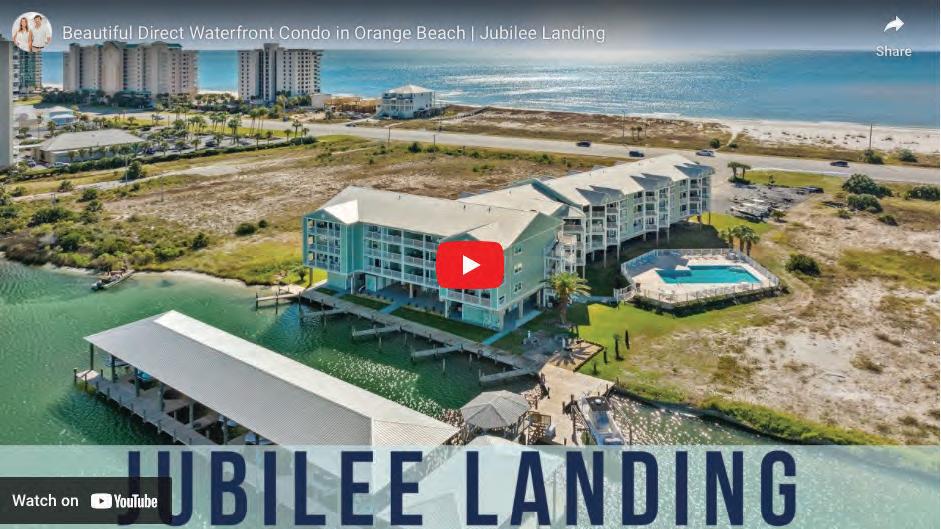



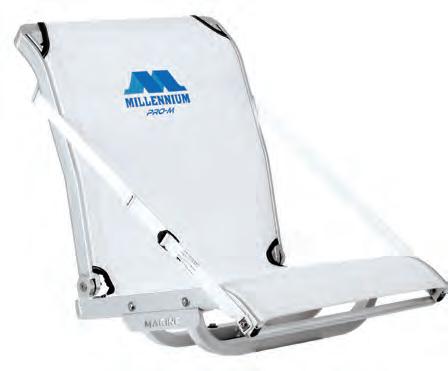
Millennium Marine’s Pro-M B100 features a unique, patented design that provides unmatched comfort, functionality and durability. Enjoy all-day comfort on the water rain or shine with Millennium Marine.



One of the most important aspects of fishing for any angler is patience. Extending that patience over long hours, especially for saltwater fishermen, can mean the difference between coming home with a handsome trophy or leaving with empty pockets. From the time it takes to get to the fishing spot to the passing minutes—or, in some cases, hours—between strikes, it's patience that can make all the difference.
And a big aspect of that patience is comfort. Few things can erode a person’s patience, like trying to perch in an uncomfortable seat for hours or waiting for that muchanticipated bite on the other end of the line. A lack of comfort can quickly turn into a lack of patience, leading an angler to throw in the towel early in the trip.


Millennium Marine has the answer to those comfort problems with their line of PRO-M Series Saltwater seats for watercraft. The PRO-M series of ComfortMax seats has three distinct models available with anodized, heavy-duty aluminum frames designed to stand up to the rigors of daily use in a saltwater environment.
Millennium’s unique, patented saltwater design provides unmatched comfort and durability, no matter the conditions' severity. It features the

breathable, cool fabric of Millennium Marine’s ComfortMax seat for mold and mildew resistance. Thanks to anodized aluminum construction, the PRO-M Series can withstand elements from saltwater to the blazing sun. Each seat in the series mounts to any standard boat seat pedestal and has a one-year warranty.
The PRO-M 200 features a unique design with lumbar support will enable hours of comfort while sitting, while the PRO-M 300’s unique design allows hours of comfort while sitting, leaning, straddling, or casting. The top-of-the-line PRO-M 100 features a ComfortMAX contoured, tight sling seat that is adjustable and reclining. It also folds flatter than competitor’s seats, allowing better visibility while under way.
All three series come in a choice of grey or white colors.
By Capt. Michael Okruhlik

Many giant fish feed aggressively at night, offering anglers multiple ways and locations to target them. While not all methods may fit your style, here are a few options to try. I’ve utilized all three methods and found success with each. Here are the places and lures to try in the still of the night.
With the dog days upon us, night fishing can be productive and very comfortable. Perhaps the coolest strategy is wade fishing. Large trout and reds move unbelievably shallow under the cover of the night sky, and tossing a topwater plug can result in some exciting explosions. I typically use this method in the dark and not around lights, except for a headlamp for changing lures or unhooking a fish. With your vision impaired, hearing on high alert, and the noises of the day silenced, the bites can be startling and give the impression that the fish is larger than it is. That’s part of the excitement of a topwater bite! I only use this tactic in areas I know well, for safety reasons, of course.
I know wading isn’t for everyone, and night wading is for even fewer anglers, but there are other methods. Fishing from a dock, boat or kayak are all good


options. Focusing on dock lights, causeway lights and lighted piers can provide excellent fishing. Many canal homes have lights, both underwater and above the surface, that attract baitfish, which attract the gamefish we target. I’d say trout are the most prolific, but reds and snook can be found mixed in with trout if you have them in your area. I like to target these areas with smaller lures, either a soft-plastic rattling paddletail or a small, hard, lipped bait with or without rattles. I prefer natural colors in some shade of white or clear with some silver mixed in.
I also enjoy fishing granite jetties at night. Setting up for this is a little more work but can yield terrific results. When jetty fishing, I bring a generator and two 1,500-watt stage lights. These areas typically have more current, so my hard-lipped lures may be slightly larger, but I still go with the smallest lure I can work properly in the current. I stick with the same colors as mentioned earlier. The channel and surf side of the rocks can both be productive depending on the tide, water clarity and bait. I recommend pointing one light in each direction until you determine which area has the best conditions. Fishing at night brings new challenges, but it can offer some of the best catches of the summer. If you decide to give one of these three methods a try, remember safety first and don’t fish alone. Enjoy some cooler times on the water and be safe.
Capt. Michael Okruhlik is the inventor of Knockin Tail Lures®, and the owner of www.MyCoastOutdoors.com.











The Xtreme Power Assist Steering is engineered to bring the smooth, easy control of electric power-assisted steering to a wide range of popular boats, including pontoons, runabouts, RIBS, aluminum fishing boats and center consoles. This is an affordable, easy-to- install solution that offers a more enjoyable driving experience.
This system differs vastly from competitive “electric helm” systems on the market, because it does not increase the load on the mechanical
steering helm or cable. Once this system is installed, the mechanical steering cable now only turns the power assist unit, while the electric steering actuator actually turns the engine load. This ensures reliable long-term performance in real-world, on-the-water conditions.
• Significantly reduced steering effort provides a car-like driving experience for mechanically steered boats.
• Engineered to fit a wide range of single
• Integrates with any existing SeaStar rack or rotary cable steering system, so there is no need to install new steering to take advantage of this new technology.
• Designed as a self-contained, plug-andplay system which easily mounts to all major outboard brands and integrates with the boat’s existing mechanical steering in less than 1 hour.
• Built in Fail-safe System automatically reverts to mechanical steering in the event of a system failure.




















TYLER WOOLCOTT
When it comes to spooling up your reels, the options are endless. For some this can be a bit overwhelming. Hopefully in this article I can help you understand what different kinds of lines are used for and what line strength is the best choice for you.
The three main types of lines are monofilament, fluorocarbon and braided lines. Each has its pros and cons in different situations. Monofilament line floats, fluorocarbon sinks and most braided lines also float.
I rarely use monofilament for bass fishing, but it does have its perks for a scenario or two. When throwing big heavy glide baits, I often spool my reels with a very strong 25- to 30-lb. monofilament, as it is very strong and much less prone to breaking on the cast when I am casting a large bait. Another thing I often use mono for is a short leader when throwing a topwater bait with treble hooks. I attach about a foot of mono leader to the end of my braid, and it is less visible while also floating to keep a topwater working naturally.
Something to note about monofilament is it’s very stretchy, making it hard to drive the hook of many different lures into the mouth of a fish, especially if you’re using straight mono and have a lot of line out. The more mono you have out equals more stretch.
I use a lot of fluorocarbon in my arsenal of bass-fishing set ups. This line has virtually no

stretch, it is more abrasion resistant than most other lines, and it is also a clearer line than anything else, making it harder for fish to see. Unless

I am fishing around extremely heavy cover, where braided line is needed to pull the fish out, pretty much every reel I use has fluorocarbon on it. I use anywhere from 10to 20-lb. fluoro, depending on water clarity,
types of cover, and also the type of lure I am fishing.
Braid also serves me well in many different applications. Having virtually no stretch, being very strong and extremely thin compared to other lines of the same strength, and outcasting every other line made are just a few perks of braid. The downside of braid is it’s basically tiny thin rope, meaning if you are around clear water fish can probably see it attached to your lure. In some cases, you will need a leader attached to the end of your braid.
Every single spinning reel I own is spooled with braid, which helps them cast better and operate much smoother than if they were spooled with the other kinds of lines. Typically, I’ll use 10-lb. braid and attach a few feet of a fluorocarbon leader in a size of my choice to the end to keep it stealthy. I have 30-to 50-lb. braid on all my topwater treble hook baitcaster rods to make extremely long casts. When fishing around heavy grass and vegetation, I also use braid, typically in 50- to 65-lb. test. This strong line allows you to get the fish out of the mess and into the boat. With your lure being in the grass, you can get away with using a thick braid, as the fish won’t see your line around the vegetation.
Hopefully this helps you understand the different lines better and helps you put a few more fish in the boat. I am always active on my social media accounts. If you ever want to reach out and ask more questions, please feel free! Tight lines out there, catch you next time!
Tyler Woolcott is a professional tournament angler and guide. Check out his website at www.tylerwoolcottfishing.com.
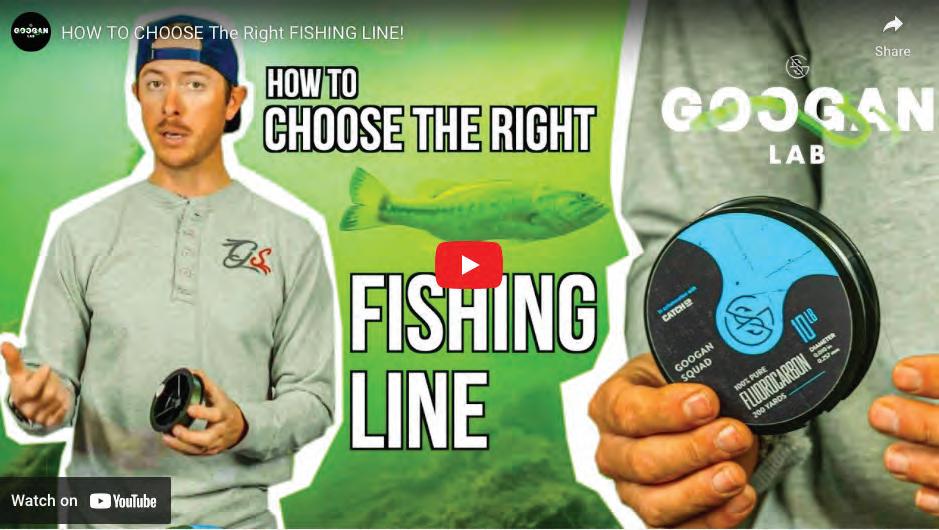





By CAM Staff
It’s hot. The lakes and reservoirs are covered with jet skis, wake boats and party barges full of sun seekers. Dog days conditions can be tough for bass fishing, but fish settle into patterns this time of year that can lead to productive days on the water.
Finding cooler water is the key to catching bass when the surface temperatures reach uncomfortable levels, and there are several ways to do this.
Go Deep: The huge schools of fish that concentrate on offshore ledges and river channel bends at many of our large reservoirs have already been beaten into submission by every angler with sonar by this time of year. You might still be able to pick a few out of the school with deep crankbaits, drop-shots or football-head jigs, but sometimes it’s worth finding less obvious fish to target.
There are other areas that hold fish. That 30-footwide shell bed off the main channel might not be covered with bass, but there will be some fish there if there’s some current, and these bass see much fewer lures and are more willing to bite this time of year. Search with a crankbait, wiggle a football-head on the bottom or drag a big Carolina rigged worm over the shells and see what happens.
Cool-Water Tribs: A tributary stream feeding cooler water into the lake attracts baitfish and bass. Fish often stage on points where a feeder creek enters the main body. Eliminate water quickly with crankbaits or spinnerbaits to see if there’s anyone home before slowing down with a jig or a worm.
Extend the Night Bite: Bass do a lot of their feeding at night this time of year, and anglers can take advantage of this by fishing the first couple hours of daylight.


This pattern will also show you that not every fish in the lake goes deep. Shallow rocks and grass edges hold bluegill, shad, crayfish and all sorts of other tasty critters. Start on top at or before dawn with a walking bait or popper and cover as much water as you can before the sun gets up. This is not really a numbers game, and the bites will be scattered, but it’s a lot of fun when a big fish blows up your lure.
Fish the Shade: When the sun gets high and hot, you’ll find fish hunkered down in the shade. Docks, laydowns, overhanging trees or matted vegetation all provide the shade bass and the things they eat look for. Bank shade is also where you’ll find bream beds where bass like to feed.
Skip a wacky rig up as far up under a dock as you can get it. Drop a jig into that blowdown. Work a frog over matted grass or punch through it with a heavy Texas rig. Cover water and pick apart those shady areas. It’s a fun style of fishing that can also be productive under less-than-perfect conditions. For more bass tips, go to coastalanglermag.com.



















You don’t need an invitation to have fun in Upcountry South Carolina: Come kayak crys-tal blue lakes, hike to rushing waterfalls, dig into local cuisine, attend family oriented events and breathe fresh mountain air. But when you hold a South Carolina fishing license, it feels like an official ticket to enjoy the great outdoors.
Fish bite year-round in the lakes, rivers and streams of Upcountry South Carolina, which is located in the state’s northwest corner in the foothills of the Blue Ridge Mountains. Devils Fork State Park in Salem is a great place to access Lake Jocassee, which holds state records for rainbow trout, brown trout, redeye bass, smallmouth bass, spotted bass and yellow perch. Or try your luck at Lake Hartwell, at Lake Hartwell State Park in Fair Play and Sadlers Creek State Park in Anderson, three-time host of the Bassmaster Classic.


The Chattooga River boasts healthy wild trout populations and is also regularly stocked by Oconee County’s Walhalla State Fish Hatchery. The Whitewater River above Lower White-water Falls is another great option for wild trout. Lake Keowee, at Keowee-Toxaway State Park in Pickens County, swims with largemouth, smallmouth and spotted bass, crappie, bluegill, yel-low perch, catfish, brown and rainbow trout.
Pick up everything you need—including advice— at local fly shops or book a guided fish-ing trip. Sam Jones, of Jocassee Charters, puts anglers on trophy trout. Buster Green’s Guide Ser-vice reels in stripers, hybrids and bass on Hartwell and Keowee. Chattooga
River Fly Shop leads fly fishing trips on the Chattooga and Chauga rivers.
Even if you don’t fish, you can still get on the water. Jocassee Lake Tours offers tours of the lake and of Jocassee Gorges, which National Geographic called a “destination of a Lifetime.” Some amazing spots can only be reached by boat. Several tours are offered, so you can learn from a naturalist while riding on a pontoon or paddle a kayak through coves and under waterfalls.
Prefer to captain your own boat? There are several rental companies, including Tri-County Boat Rental, on Keowee, Jocassee, Hartwell and other lakes.
If you’d rather be under the water, Jocassee is a world-renowned freshwater diving desti-nation that boasts visibility of more than 50 feet at depth. Lake Jocassee Dive Shop offers lessons and guided trips to see “The Wall,” where a section of mountain was blasted to build the dam, or a 40-foot swim-through wooden sailboat.
From fishing to boating, hiking to camping, biking to bird watching and more, the Up-country’s state parks are a great place to play. Dip into the swimming hole at Oconee State Park. Hike to the tops of Pinnacle and Table Rock mountains at Table Rock State Park. Explore the 13,000-acre Mountain Bridge Wilderness Area at Caesars Head State Park. Or create your own adventure at any of the Upcountry’s 13 state parks.
UpcountrySC.com to learn more.
It seems like the farther south you go, the tougher the fish get. This especially holds true when it comes to the South Pacific. If you are looking to go head-to-head and toe-to-fin with some of the toughest fish out there, Fiji is a great bet.
These fish are aggressive, fast and strong, and with a fortress built of line-cutting sharp edges, the fish start with the advantage. This is a great place to target giant trevally (GT). Although it still far away, Fiji is a great alternative to the Seychelles, and it is a destination that offers amenities for anglers as well as their non-fishing companions. I fished out of Savusavu, a large remote island to the northeast of the main island of Fiji. After flying into the international airport at Nadi, on the east coast of Fiji, Savusavu is another hour by small plane. The remoteness means less fishing pressure, but the island still offers luxury accommodations.
As fishy as Fiji is, the islands don’t get much fishing destination tourism. It’s mainly a diving and resort destination that happens to offer amazing fishing, as well. Summers are known for a great yellowfin tuna and GT bite, and winters hold marlin and wahoo. I was there during a transitional phase into winter (seasons are reversed there), and luckily there were plenty of resident fish to target including GT, which is what I was after. Immersion Fiji is the most experienced guide on the island, and Michael can handle anything from topwater for GT to massive yellowfin and even spearfishing or a cool waterfall getaway.
The GTs are unquestionably an apex predator and the top quarry to chase. These are very aggressive, strong and smart fish that you need to be battle ready for. My weapon consisted of

By Will Schmidt
and 350-lb. terminal tackle. When a GT explodes on a 7-inch popper, there is no question that it’s game on. It’s like a bowling ball being dropped from a third-floor window, followed by hooking your line to a semi truck.






With drags set at 20 pounds to try to keep these monsters from getting into the reef, the fight is as much on the fish as it is on you. Any less drag would result in either countless breakoffs or fights that would reduce the fish’s chance of a healthy release. The fight will give you strong runs and a standoff that will tax your strength. Bigger fish are even tougher, so be prepared for some heartbreaks. The fights are tough, but the adrenaline left over is plenty to get you right back on the casting deck to do it again. There is no doubt that topwater fishing for these guys exceeds the hype.
Another fish that will blast your big popper is a Pacific Spanish mackerel, also known to the locals as walu. Similar looking to our kingfish, this is one of Fiji’s most prized table fare. It’s much whiter, flakier meat than our mackerel and is a staple in Fiji’s national dish Kokoda (pronounced ko-con-da), which is a ceviche with fresh coconut cream. They are harder to catch on topwater plugs, as they often blow it completely out of the water, but I can attest it can be done. They also eagerly hit deep trolling plugs, which makes for a nice break from casting. Long strong runs and crazy aerial attacks make this another great fish to
come across as you search for GTs.
You can also downsize your popper to a large floating stick bait and get additional amazing topwater action. It opens the range of smaller yet still aggressive and strong fish like the red bass. This ambush predator hides in the holes in the reef and intensely blasts what it thinks is a wounded bait. They look and act a lot like a mutton snapper, but beware as they are full of ciguatera. So, as tasty as they look, do not eat these guys. Other fish are eager to attack, as well, including amazing bluefin trevally, emperor fish and other reef dwellers. Interestingly, there are reefs where some of the fish always have ciguatera and others that the same species do not, so local knowledge is key when it comes to what you decide to keep for the table.
and friendly, making the hospitality second to none. The water is unbelievably clear, and the islands are as peaceful as they are beautiful. It truly makes for a trip of a lifetime.
Will Schmidt is a seasoned tournament angler who has been writing about fishing for three decades. For information about fishing Fiji, contact Immersionfiji.com. Make sure to check out their YouTube channel to get yourself excited for the trip of a lifetime.
If giant trevally are on your hit list, you’ll have to travel to find them. Fiji is an amazing destination that fully delivers. It also is a great place to relax for those not interested in fishing. The locals could not be more inviting








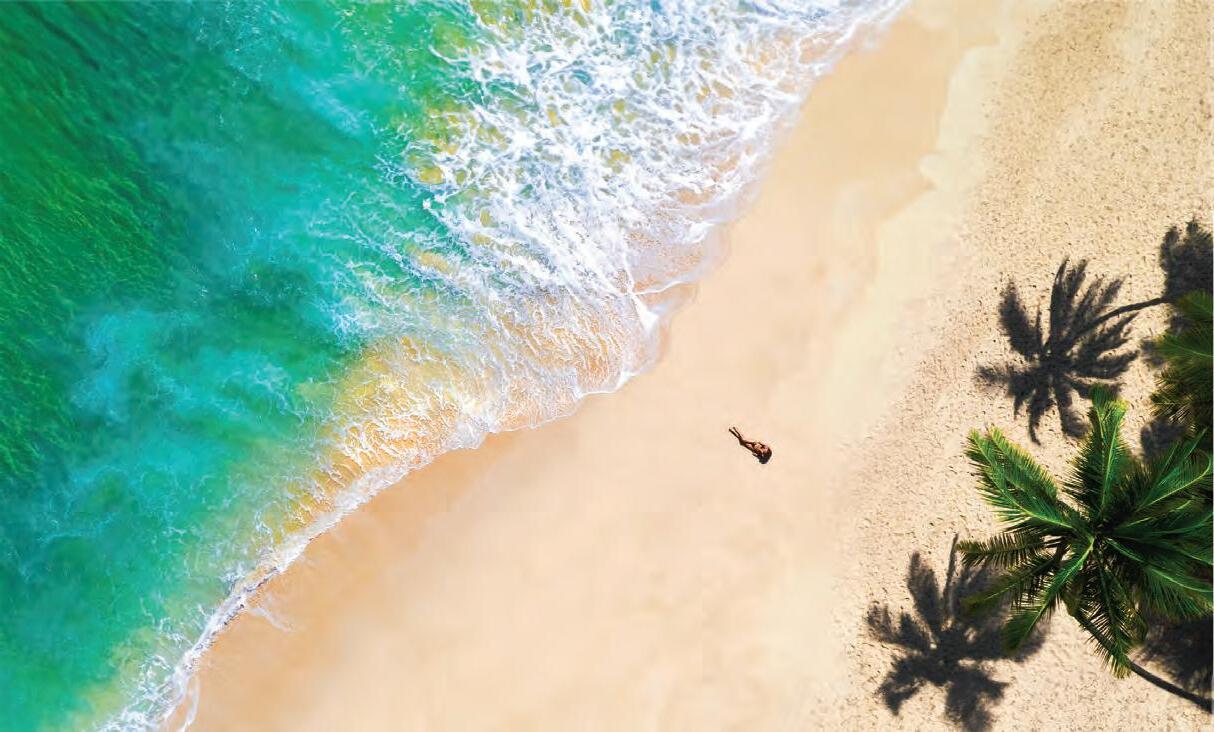



Surf Expo, the premier watersports and coastal lifestyle tradeshow, returns to the Orange County Convention Center in Orlando, Fla., from Sept. 5-7, 2024. Held in the West Concourse, the September event features an expansive selection of exhibiting brands and an exciting lineup of events and networking opportunities.
“We are thrilled about the array of exhibitors that will be at our upcoming September event,” said Surf Expo Show Director Roy Turner. “From the established major brands to the next wave and start-ups, retailers will be able to meet face-to-face with key players and find the next new.”
“Surf Expo allows retailers to preview styles from fishing and marine products, top surf brands, hard goods, apparel, footwear, swimwear,
boutique fashions, and souvenirs,” adds Turner.
Retailers attend Surf Expo to stock their shelves for adventures on or near the water and find the gear and goods to keep customers coming back for more. Whether it is surfing, paddling, fishing, hiking, camping on the beach, wake surfing, tubing or simply soaking up the sun, Surf Expo has everything needed to cater to customers with a passion for waterborne thrills, outdoor adventure or just the sun loving beach vacationer.
The Shoreline category at Surf Expo is the hub for brands that specialize in inshore and offshore apparel and accessory products; sportswear, technical apparel and gear, footwear, outerwear and hardgoods as well as games and accessories to transition from a day on the water to stretching out on land. This helps target businesses associated with outdoor amenities and recreation found in lake and beach towns nationwide and offers crossover opportunities for buyers and manufacturers alike.
The Surf Expo show floor is organized by product category with complementing cross-selling categories in adjacent aisles making it easy for retailers to navigate so they can easily discover the newest brands and products in person, all while making purchasing decisions.
Chris McCotter from Lake Anna Outfitters, Virginia, reflects, “As first-time attendees, we did not know what to expect beyond a strong recommendation to attend from a supplier. The show was exactly what we needed to take our shop to the next level with the merchandise and brands we wanted to stock.”
A wide range of both returning and new exhibitors will be represented that cater to the watersports, coastal life and outdoor industry such as; ORCA Coolers, GCI Outdoor, Teva, Xtratuf, POP Board Co., Salt Life, Hurley, CHUMS, Salty Crew, Captain Fin, Dark Seas, Howler Brothers, Rip Curl, SUNSKI, Deep Blue Gear, Fish Hippie, Jetty, Hook & Tackle, O’Neill, Reel Skipper, I-SEA Sunglasses, Chubbies, Vissla, Tommy Bahama, DIFF Eyewear, Katin, Outerknown, Free Fly Apparel and many more.
In September, Surf Expo will feature a full schedule including daily fashion shows, retailer learning labs, industry networking events, happy hours and parties.







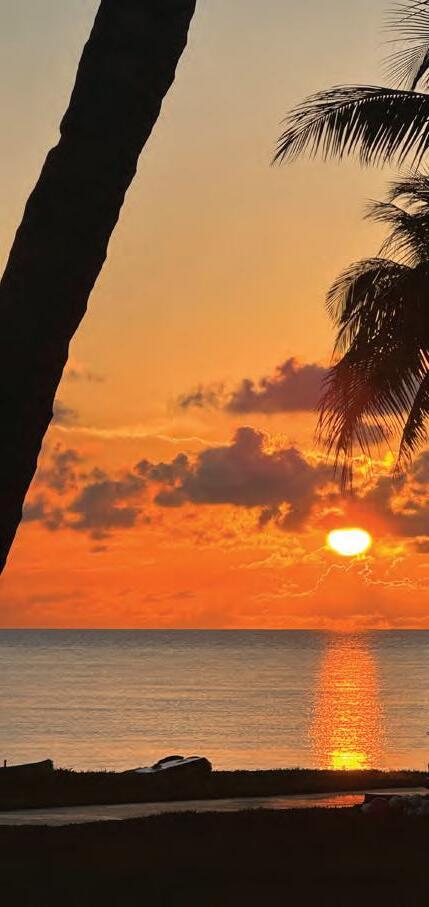



By Mark Ambert



or a diehard blue water angler, it didn’t take more than a minute.
When the text message came in, my immediate reaction was “Yahoo! We’re going to the Bahamas!” My good friend and fishing brother Stephen Leo put the trip together last minute, and weather permitting we were heading to Grand Bahama Island and Old Bahama Bay (OBB) for a three-day junket to fish and experience some of the island culture.
Old Bahama Bay Marina, located in West End, is only 56 nautical miles from the Florida coastline. Summer is the ideal time to plan these last-minute excursions, as the weather stabilizes and provides a perfect window for a weekend trip. It is critical when

fishing Bahamian waters to know the updated weather along with fishing regulations and to have at a minimum, a plan A, B and C targeting different species. This has become more relevant as sharks and barracuda continue to plague the island fisheries.

I was making the trip with seasoned anglers and captains. My good friend Capt. Mark Wilson, President at Wilson Yacht Survey Inc., knows his way around these waters. He has a love for these islands second to none and clearly knows the local reefs. Also joining us was New Jersey angler Neal Goldstein – an avid striper fisherman.
We settled on a three-day trip and would be fishing hard the first day after checking in with local authorities. We discussed bringing

trolling gear for the tuna bite but changed course last minute after hearing testimony of the dismal returns which have been blamed on shark activity. Plan A was to locate some nearshore reefs not heavily fished or wellknown and target bottom species. The theory being: if fishermen know these reefs, so do the natural predators. Both shark and barracuda have become extremely adept at following the sound of the motors to locate an easy source of food. Whatever’s on your line is fair game to these predators, and we had local intel saying the normal locations were pretty tough areas to sneak a good fish past them.
This plan worked out, and we had a productive afternoon putting some tasty critters in the cooler. We caught a variety of

snapper including reds, yellowtail and yellow eye, as well as some delicious Snowy Grouper. We were fishing reefs from 50 to 180 feet deep.
My normal plan B is to have a wide assortment of jigs to fish various ledges. Jigs are not a good option here, as anything shiny attracts a swift predator response, so we stuck to conventional chicken and three-way rigs. Bait was mostly fresh-cut fish and squid. On the deeper reefs, we switched to mid-sized electric reels like the Piscifun Kraken spooled with FINs braid and conventional deep-drop tackle.
Day two we were up early and on the reefs an hour north of the island, moving from 300 feet inshore to the deep-water dropoff at around 800 feet. We broke out the bigger tackle, including my trusty Diawa Tanacom. It was here we landed a monster amberjack, which was my personal best. AJ are my favorite fish to eat when smoked, so in the cooler it went. Toward the end of the day, we hooked what was believed to be a giant Warsaw grouper in 1,200 feet. We lost this fish during a battery switchover. In the future–when dropping deeper than 300 feet—I’ll make sure to use a cord attached to the house battery. We ended the day focused on deep dropping for yellow eyes vs. shallow-water


snapper and did well boating most of our catch. Whenever we came inshore, the cudas were there and waiting.
If all you do is fish, you should reconsider. Head back to port and the resort because you’re missing the best part of West End: the culture and the people. Local islanders are friendly, knowledgeable and always willing to lend a helping hand… and boy can Bahamians cook!

Whether it’s locally sourced seafood or island meal specialties, the eateries serve local island dishes like fresh curried mutton (not the fish), delicious conk fritters and an amazingly refreshing local drink called “The Gully Wash.” Eating “the conch pistol” after a few too many gullies is an island rite of passage. Local establishments with names like Sherry’s On Da Westside and Eddie’s Gully Wash are definitely worth the visit.
Our third day dawned bright and sunny but quickly turned threatening, as it often does in the Bahamas. Always stay on the local weather and radar reports, as it can be a long and miserable ride in inclement weather. Plan to stay the extra day and do so if needed.
For plan C, we always switch gears and
do a “run-and-gun” style return trip looking for signs of feeding fish. Birds, porpoise, whales, weed lines or floating debris all bring a quick stop where we pitch a mixture of live and cut bait along with jigs. This trip yielded three beautiful mahi and a great way to bring the voyage to a successful close.

On your next trip to the Bahamas, spend time getting familiar with the local offerings. You can rent golf carts and go exploring by land or kayaks to experience the local inshore reef system and change up your fishing gameplan.
See more from Mark Ambert on IG @marksgonefishing_™ . Check out Blue Marlin Cove – Resort and Marina at https://bluemarlincove.com/contact.shtml.










, the leader in high-performance soft-sided coolers, is hitting the water this year with new, upgraded fishing products. Our fishing team partners told us what they needed, and we listened!
Products are in stock and ready to ship; The Fishing Cooler Backpack, 2, 4 & 6ft Fish bags, Fillet bags, Boat fenders, EVA Traction pads, Inflatable Docks, ISUPs, and of course, our high-performance coolers specifically designed for use on boats, guaranteed not to leak, and to keep ice cold for up to 24 hours.
Thirty years ago, AO was launched to provide active, hard-core people with quality products at a reasonable price. We started selling our soft-sided coolers to the hard-core, go-fast boaters and fishermen in Lake Havasu. We aimed to keep ice in our coolers for up to 24 hours in 120-degree Havasu heat. That goal was accomplished 30 years ago, and we’re still at it.
We know our customers; they fish and boat in the summer and ride the dunes or trails in the winter. AO products give those high-octane souls greater freedom to embark on and enjoy what’s important to them.
Make sure that your gear does not hold you back from doing what you love. AO products are built to handle whatever offshore adventure is coming next.
AO is flexibly rugged, seriously fun, and honestly real!
We’re looking for active, adventurous folks that demand quality and performance from their gear. Share your adventure and send us your fish story or photo.












By Wayne Johnson

then go 100 yards or less, drop anchor and fish?
Probably never.
I’m beginning to think nobody ever does. If you’re like me, you’re anxious to hit the throttle and head off to some distant location. You didn’t put all that horsepower on the back of your boat to idle 100 yards, but maybe you should.
I have frequently seen nice snook at the dock while launching my boat and then fail to see another fish that good all day. It got me thinking that there have got to be areas so close that boaters pass right by them, yet they are not accessible to shore anglers. These areas are also just up or down current from the docks where people clean fish.
What if I just move a short distance from the boat ramp or across the canal? There must be
usually turns out very well. What looks like heavily used areas are not necessarily areas with heavy fishing pressure, and often they turn out to be quite productive. If they aren’t productive, it doesn’t matter. I didn’t burn much time or gas to try them.
Here on the west coast of Florida, south of Fort Myers, Lover’s Key is a great example of forgotten fish. After launching, pretty much every boat heads straight for Estero Bay, to the passes or out into the Gulf of Mexico. Meanwhile, just a few yards in the other direction, I’ve seen redfish, trout and snapper, and I put a friend on his personalbest snook. This spot is so close to the boat launch that even kayakers push past it before putting lines in the water.
Before I leave the boat ramp, I


like to walk the dock, checking the direction of the tide and taking a good look for gamefish or baitfish. Either one indicates there is likely good fishing nearby and what hatch I may need to match.
On a recent trip, I picked up a friend at his own dock, just off the Imperial River. We spotted a few fish right there, and the fishing was so good that we never left his canal the whole day. We caught four species within a quarter mile of his dock.
Typically, late in the day, when I’m headed back with a few leftover shrimp, I’ll stop just outside the pass and swap the smallest shrimp for ladyfish. Or I’ll stop and throw a few more casts at some promising shoreline. It’s surprising how often I geta few good bites and a little excitement to end the day.
So, before heading out to your dream spot, or on the way back, try the nearby spots. You might just catch fish everyone else forgot to fish for.
Got a great fishing story? Write it up and send with a few photos to editorial@ coastalanglermagazine.com. We might just share it with the world.


Hilton’s innovative SAT2NAV system connects your Garmin, Furuno or Raymarine chart plotters to HiltonsOffshore. com’s server directly from your MFD. Customize/download the latest dynamic charts and then navigate on them outside of cell range — ALL FROM YOUR MFD SCREEN!
Split screen a Hilton’s chlorophyll or sea temp chart along with a bathymetry chart and/or instrumentation.



Since 2004, Hilton’s has helped serious offshore anglers catch more fish while burning less gas. This is the company that pioneered online satellite fish forecasting with timely updated charts that display all of the pertinent fishfinding information at a reasonable cost for the best anglers in the world.
This year, Hilton’s pushed the industry forward again with its SAT2NAV system. In a quantum leap ahead of any other service in the industry, Hilton’s has brought its unparalleled charts where they belong… to your boat’s chart plotter screen!
Gone are the days when a separate smart device was required to navigate on charts downloaded while in cell phone range. SAT2NAV allows you to surf Hilton’s online mapping portal, select desired charts and then navigate on them—all on the water and all from the multifunction display in your cockpit. Nobody in the industry can do what Hilton’s is doing with SAT2NAV.
SAT2NAV is an external device that connects to the monitors of your Garmin, Raymarine or Furuno multifunction displays. It has its own WIFI and GPS antennas and brings access to Hilton’s charts to the monitors at your helm. It is now possible view your vessel’s position relative to temperature breaks, color changes, high-res bathymetry, altimetry, etc. on your multifunction display.
With split-screen, all of this powerful imagery can be displayed alongside sonar, radar or other desired information.
With SAT2NAV, it’s never been easier to identify and navigate to ocean features where bait and gamefish congregate. You can do your homework on the charts at home, but sometimes it’s necessary to call an audible on the water. With Hilton’s charts clearly visible on your monitor, you can find those good currents, minute temperature changes, sea-surface upwellings, color breaks and navigate to them. Perhaps more importantly, you can eliminate dead water, which makes you a much more efficient and effective angler.


Of course, all of this comes with Hilton’s unrivaled service. Their philosophy, reputation and longevity in the industry rely on the concept that if the information doesn’t help you catch fish, you won’t use it. So, they continually strive to provide the best up-to-date imagery, information and technology, and they’ll go above and beyond to make sure you know what you’re looking at and how to use it.
Hilton’s, again, is leading the industry. With SAT2NAV they can do what no one else in the industry can do right now. At the same time, they are continually working to be better with additional eye-opening features that will further distinguish Hilton’s as the best in the fish forecasting industry. Stay tuned…
Coastal Angler Magazine and its freshwater component The Angler Magazine continue to experience franchise growth. Recent additions to the franchise expansion include Middle Tennessee, Puerto Rico and St. Augustine, Fla. According to CEO Ben Martin, the franchise model is the strongest business platform available in today’s publishing space.
“We’re just about to expand into the
Texas market, and we look for accelerated growth throughout the region,” said Martin. “Coastal Angler and The Angler magazines boast dozens of current locations, and these new editions add to our powerful and expanding footprint.”
The franchise publishing model acts as a co-op entity enabling franchise owners to enjoy lower costs on printing and other business purchases. Its training program and support system empower
individuals with no prior publishing experience to launch and operate successful local fishing magazines in nearly any market where fishing is a popular pastime.
First published in 1996, Coastal Angler embarked on the franchise model in 2008. The total circulation for the magazine is now over 250,000 copies per month, and it is recognized as the largest outdoor publication in the country.
Mark Twain said it best when he said, “The secret of success is making your vocation your vacation.”
Jim Childers grew up fishing and hunting in west Tennessee. “If I wasn’t working, you could find me in the woods or on the water.” As a kid, his family would travel several times a year to the Panhandle where he and his dad would fish. He fell in love with the area early on and vowed to move there someday.

Jim Childers
The Panhandle Co-Publisher
Jim semi-retired from his print business three years ago. He captained his 42-foot boat down the Tombigbee Waterway, through Mobile Bay, to the Panhandle. He currently lives on the Intracoastal in Perdido Key with his wife, Tami. He has two married daughters who live in Arkansas and Oklahoma.
“I have read and admired Coastal Angler Magazine for many years. I love that I can go anywhere in Florida and pick up a locally produced edition with invaluable local info. Not only will it give me fishing tips from local captains but also news on area tournaments and where to go for just about anything to do with the sport of fishing...including where to eat them!”
As Jim takes the reins of The Panhandle Edition, he looks forward to the opportunity to get out and meet the great folks in the Panhandle. “I hope to make some friends, share ideas that will help them grow their businesses, share some stories and just talk fishing.”
Enrique Lara and Freddie Nieves’ shared enthusiasm for boating and fishing has solidified a strong bond between them.
Deeply immersed in the vibrant business of acquiring and reselling used boats in Puerto Rico, Enrique has honed his expertise over numerous years. In parallel, Freddie has made a lasting impact in the maritime industry through his role as a marina general manager in Puerto Rico, Miami and St. Pete.

Freddie Nieves & Enrique Lara Puerto Rico Co-Publishers
Boasting a cumulative experience exceeding two decades in boating, fishing, boat sales, nautical publications and marina management, these enterprising friends are driven by an unwavering vision to bring the multitude of benefits Coastal Angler Magazine offers to their cherished homeland of Puerto Rico.









